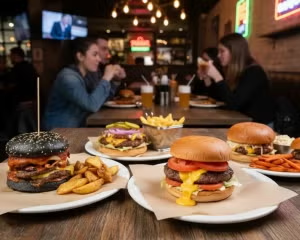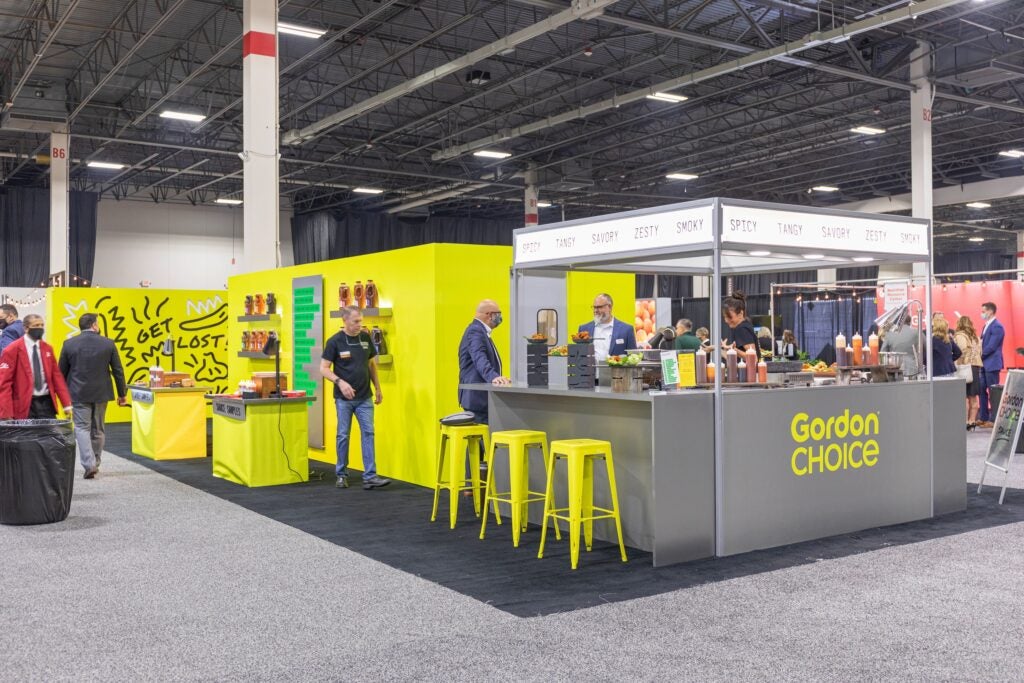We break down some of the challenges restaurants face this year.
The chill in the air doesn’t mean it’s time to shut down outdoor dining. Instead, it’s time to evaluate whether your restaurant’s patio, sidewalk or tent seating will be profitable.
Last winter, outdoor dining was a lifeline for businesses dealing with lockdowns or limited indoor seating. This year’s ongoing labour shortages and supply chain challenges may make operators reluctant to try again.
Mixed signals on outdoor dining
In the U.S., data from the National Restaurant Association indicates less than one-third of operators plan to use their outdoor dining space through the winter.
“We have our dining rooms back open, but there’s not enough help, so restaurants are asking: ‘Do I really want to add three or four more stations outside when I really can’t cover the indoors?’” asked Gordon Food Service U.S. Customer Marketing Manager Geoff Bonham.
Agreeing with that assessment is Scott McDeivitte, a Gordon Food Service Customer Marketing Manager in Canada. “Ski resorts or places with strong outdoor programs will be fine because people expect it. Other operators have to ask themselves what they can actually manage, and is it worth the effort?”
7 outdoor dining challenges
Restaurants must take many factors into account this time of year. When it comes to outdoor dining during cold-weather months, McDeivitte and Bonham suggest watching these seven areas:
1. Staffing capabilities
Good workers are too valuable to lose in today’s market. Outdoor dining can add stress, Bonham says, so take steps to reduce the amount of walking for staffers. “Outdoor dining is usually the furthest from the kitchen, so everything you can do to reduce steps and ease the serving process helps.”
A hot box to transport foods, servingware stations and handy beverage refills can make the experience better for staff and customers, McDeivitte points out.
2. Costs
Labour, food and heating costs are on the rise this year. Add in the extra expenses of maintaining outdoor eating spaces, and operators must keep a close watch to assure a return on investment.
“Restaurants pivoted to outdoor dining out of necessity last year,” Bonham said. “They had to keep their doors open and keep employees going, but they didn’t make a lot of money.”
3. Capabilities
If a restaurant is committed to outdoor dining, make it special. “I live near a resort with a beautiful outdoor eating area,” McDeivitte said. “Because it’s an après-ski area, people are dressed for it and they make it work. For many other businesses, it’s harder to achieve.”
Bonham recommends unique specials, fun outdoor programs, games or a tailgate atmosphere to make outdoor dining more festive.
4. Menu
Smaller menus are a fact of life in the pandemic era. That’s especially true for outdoor dining, because some foods on your main menu aren’t well-suited for outdoors. Bonham suggests patio LTOs and handheld foods so people can eat and drink without fumbling with forks, knives or even plates if they are standing.
“This year it will be about smaller menus, ingredients not affected by the supply chain, and way more LTOs,” McDeivitte added. “Menus for outdoor dining should be a lot more comfort-oriented—things that hold their heat, like soups, stews and casseroles.”
5. Customer safety
The pandemic is still with us, and safety is important for your guests and staff. Requirements vary by location. Canadian provinces require social distancing, McDeivitte said. Mask wearing, proof-of-vaccine requirements for guests and COVID contact tracing may be part of the picture in your municipality.
“Restrictions in place last year have been lifted to some degree,” McDeivitte said. “Safety is still a big deal. In addition to being aware of requirements in your municipality, it’s a must to maintain disinfecting and sanitizing where people are together.”
6. Regulations
Governments have been supportive of restaurants during the pandemic, allowing sidewalk dining, shutting down streets to create restaurant zones and more. Both Bonham and McDeivitte warn operators to make sure regulations haven’t changed before launching outdoor dining.
7. Equipment
There was a rush for limited (and expensive) quantities of portable heaters, fire pits, shelters and other outdoor dining needs last year. To meet the need this year, Bonham suggests checking the secondary market for possible cost savings. Some businesses have closed or no longer need outdoor dining equipment.










